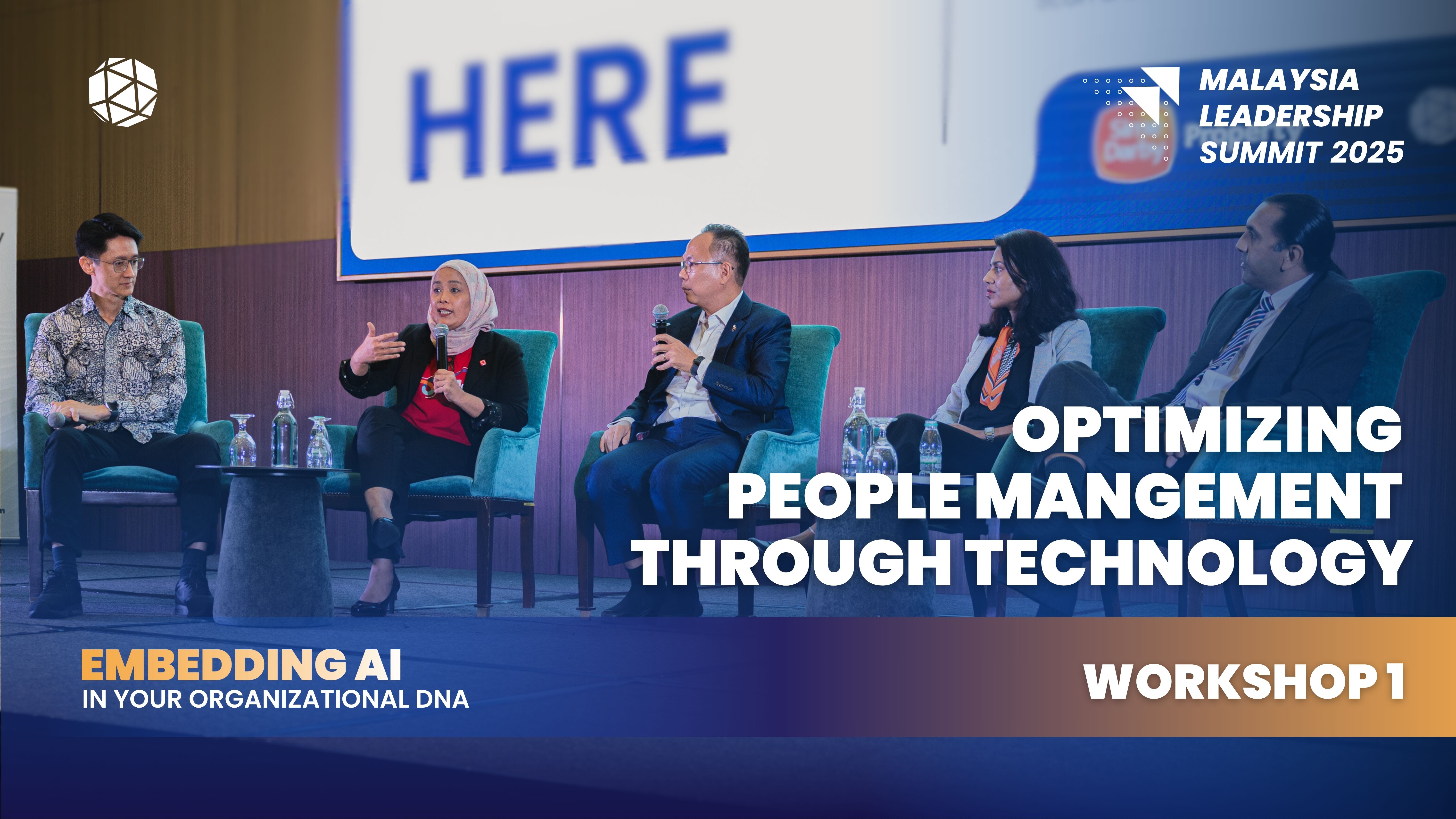The Vital Habits That All CEOs Must Observe

Before we get into the behaviours, actions and practices necessary to stay ahead of the game, let’s examine the context, issues and challenges a chief executive officer (CEO) faces today. Just a couple of weeks ago, a client of mine saw a two-minute video of Alibaba’s latest venture into offline retailing. This was the opening of Tao Café in Hangzhou, China – an unstaffed convenience store!
To gain entry into the store, shoppers just need to download Alibaba’s Taobao App and scan their personal QR codes at the entrance gate – similar to those found at our LRT/MRT stations. Customers can enter (50 people at a time) and browse the shelves.
After selecting their food, beverages and snacks, they simply exit the store via passages that are equipped with facial recognition scanners. Shoppers are automatically charged for their purchases via their mobile Alipay App. Even items that are kept in sling bags or trousers’ pockets cannot escape detection. Welcome to shopping in the near future!
Imagine if you are the CEO of a “traditional” retail/convenience store chain. Disruption is coming!
Re-defining the role of a CEO today
As seen in the example above, the best leaders today need to drive innovation or risk being left behind. In addition to mental agility and acuity (i.e. intelligence quotient or IQ) and social/interpersonal or people skills (i.e. emotional quotient or EQ), leaders’ grasp of how to tap into digitalisation and modern platforms (i.e. digital quotient or DQ) are equally essential.
Hence, leaders today need more than just IQ + EQ, one must add DQ to the equation:
Leadership = IQ + EQ + DQ
While CEOs are still expected to have credibility, competence and care, they now need to be abreast of digital developments as well e.g. e-commerce, FinTech solutions or the autonomous car and how Big Data has created new careers e.g. data scientists, database managers, data architects, data analysts, etc.
CEOs also need to be conversant and familiar (preferably fluent) in social media to engage younger stakeholders and collaborators. Being a CEO today is harder than ever.
With the advent of the digital era, the digital CEO’s job involves engaging with more stakeholders and to do so at a rapid pace.
Leaders who are able to skilfully transform old processes with automation of digital models to create a vision for the future, will be in high demand.
As for data management, the focus today is unique utilisation of data rather than just simply sourcing data. Our role as a digital CEO is to boldly expand in this area, where millennials are leading the march.
The digital CEO also has to help and drive the workplace to continuously improve themselves.
So, what are the implications for CEOs today?
Every CEO is trying to gain competitive advantage in the face of these disruptive market conditions.
There is often a lot of hype about being agile and unable to move quickly when a situation arises. Yes, by all means, be proactive but, more importantly, take the time to work out the big strategic choices.
Strategic questions
Here are a few questions to consider when building sustained advantages for your company:
- How can I build an identity for my company (or stay true to it) and use it to drive growth? Every business needs to grow.
When all cost-saving and down-sizing initiatives have been implemented, CEOs still need to deliver growth in both the long term and short term.
- How can I get in front of market trends to craft or structure the wants and needs of my customers and clients? Think different. Apple Inc does not have to be the only one. How are we interpreting our data? What new insights have we derived?
- How can I translate the company’s strategy into everyday operations? Are our current systems impeding execution? Are there business processes that need to be updated, modified, enhanced or buried?
What new skills or training are needed? Can these solutions be developed internally or sourced externally?
- How can I build a culture that allows the organisation’s talents to embrace new risks and opportunities; a culture that works together, to see possibilities arising from change and not as a threat?
Are we building capabilities that will differentiate us in the market? How are we leveraging our people to be unique and distinctive?
- How can we allocate or re-allocate our resources? In the early 1980s, when Jack Welch became the chairman and CEO of General Electric (GE), he started making massive changes.
One such change was cutting down the bureaucracy within GE at the time (it is commonly known that GE had about 400,000 employees in 1981. But in 2001, when Welch retired, it had only about 200,000 employees. However, the company’s value had risen 4,000% during that period.)
Nonetheless, amid all the hard-hitting cost-saving initiatives, Welch invested US$30mil (a lot of money back then) into a state-of- the-art management training campus in Crotonville, New York.
This decision met with a lot of internal misgivings and complaints but Welch drove it through, driven by his vision to build an army of leaders in GE.
The vital habits
The three Ds – digital, data, disruption – can indeed make anyone’s head spin. Yet, there is no overdraft facility for time. We all have only 24 hours in a day. So, how we spend and prioritise our time becomes even more critical.
Here are seven habits that may help:
1. Focus on energy, not time management
Energy management today is far more important than time management. Today, executives are like corporate athletes.
You need all the energy you can muster to not only last the pace but thrive. Time is finite, energy is a different story – it is renewable.
We are human beings, not meant to run at high speeds continuously, for long periods of time, unlike computers.
The book The Power of Full Engagement, by James E. Loehr and Tony Schwartz, describes the Ultradian Rhythm cycle which repeats itself many times a day.
Basically, for about 90 minutes, you are in high performance mode.
Your alertness, concentration, creativity, emotional resilience and mental stamina are all in top gear.
Then, for about 20 minutes, your body needs time to rest and renew its energy storage.
So, to get the most out of your day, go full-out for 90-120 minutes (i.e. fully engage) and then take a 15-20 minutes’ break (i.e. strategically disengage). Make a couple of phone calls, walk around the office, take a few sips of water, get an update from your PA, etc. Replenish your energy and fully engage again.
Full engagement requires drawing from four separate but related sources of energy – physical, emotional, mental and spiritual.
“To be fully engaged, we must be physically energised, emotionally connected, mentally focused and spiritually aligned with a purpose beyond an immediate interest”, say the authors.
Our fuel tank, so to speak, consists of four different sources of energy that help us fuel performance:
Physical: How’s your body doing? How’s your muscle-to-fat ratio? What does your nutrition look like? Are you drinking enough water? Are you getting enough quality sleep? Are you exercising regularly?
Emotional: How well are you regulating your emotions? Do you feel positive emotions on a regular basis? Are you emotionally resilient? Or are your negative emotions (anger, impatience,
frustration, etc) running the show?
Mental: How’s your brain doing? Are you able to focus and concentrate for sustained periods of times? Or are you quickly losing focus and easily distracted?
Spiritual: How’s your motivation doing? Do you have a life purpose? And a clear set of values that drive your actions?
Don’t get me wrong. You still need to plan your time and organise your priorities, but tackling them with full engagement makes a whole lot of difference.
2. Communicate your 20/20 vision
The term “20/20 vision” is used to express normal visual acuity (the clarity or sharpness of vision) measured at a distance of 20 feet. If you have 20/20 vision, you can see clearly at 20 feet what should normally be seen at that distance.
Your team needs to continually feel clear and excited about where the company is headed. It is your responsibility to regularly refine your company’s vision.
A CEO should determine and relentlessly communicate the organisation’s strategic direction. Until that’s settled, making decisions about anything else at the business is difficult. And without this, the company is merely a collection of people pursuing individual goals, guided by their own values.
While other people may help shape the strategic vision, the CEO must be able to describe it in a clear, engaging and exciting way for all stakeholders. All the players in the organisation should understand how this direction affects their job and daily responsibilities.
Everything the CEO does should support this vision. Too many CEOs have allowed the strategic vision to be nothing more than slogans on a company T-shirt or a banner outside the factory.
Employees tend to need at least a few months of clarity – and at least a year or two of general “direction” – to remain psyched about their job.
Remember, a huge amount of people’s job satisfaction is derived from the perception that their work will provide a strong contribution to the company’s or team’s objectives.
3. Culture is everything – Keep building it!
Culture is the set of shared attitudes, goals, behaviours and values that characterise a group. It adds up to how things get done at a company and influences the entirety of the employee experience and thus the customer experience.
Every organised group of individuals develops a culture – whether it’s explicitly recognised or not – and, contrary to popular belief, the CEO, not just human resources, must constantly observe and be involved to achieve the desired culture.
The most critical part of culture is values – the CEO ensures that they are applied consistently from top to bottom, across all departments. A good culture makes people feel safe and respected, enabling them to perform at their best.
Today’s businesses understand the value diverse leadership brings in driving innovation and business results. Senior executive teams and boards need to be reflective of society and the customers their companies serve.
Take Unilever for example. When I left the company 20 years ago, the board of directors were all Europeans and had only two women. Over the years, an American and an Asian or two joined the board.
Today, the board includes Americans, Africans and Asians. And half of them are women. Same goes for their global executive management team. Hurray for them.
This might interest you: Why You Don’t Need Executive Presence to Succeed
4. Obsession for growth
Let’s face it, the CEO is ultimately responsible for a company’s performance. To be successful, he or she must take an active role in driving that performance. You have to hit the numbers. Quarterly!
The cost-cutting emphasis of recent years is no longer enough. Shareholders and boards want to see growth. Today’s CEO needs to be a growth hacker.
Where do the earnings and cash come from? What are the growth drivers? Are you allocating proper resources (capital and people) to drive short-term and long-term growth and profitability?
The CEO also serves as the interface between internal operations and external stakeholders.
He or she needs to ascertain how different stakeholders expect the company to perform, interpret this for internal teams and then be sure the proper metrics accurately gauge performance.
As the saying goes, “you get what you measure”. The CEO sets the bar for the level of performance to be reached, regardless of the company’s size, type, circumstances or stakeholders.
5. Always get the best people on the bus
Putting the right people in the right positions with the right training is probably the single most important thing a CEO can do. With the right team, all things are possible.
With the wrong team, nothing else matters. Develop the habit of always looking out for and spotting great talent, internally and externally.
Digital technology, artificial intelligence, and robotics are all changing how we do business.
Developing digital natives to enter the leadership ranks must be a priority today. Determine what your unique employment brand is in order to attract the best and brightest.
Getting great talent on board is half the game. Getting them (especially your C-suite) to act as a cohesive team is the other half.
Whether it’s a regular golf outing, bowling night, a Sunday barbeque or durian party, you have to build an open, transparent and inclusive culture. You and your team are the purveyors, the models and examples of organisational culture for the rest of the company.
6. Evolving leadership
This is a natural corollary from all the digital transformation, social media and growing number of millennials in the workforce.
This could include reorganising the company regularly as a way to induce efficiencies, jettison unnecessary activities and revitalise managers. I recall a previous client, Graeme Murray who was managing director of Colgate-Palmolive in Malaysia, he re-organised the entire marketing department introducing category management and focusing on new product development, putting his best marketing manager to head that unit.
The result was the introduction of two successful new brands: Axion, the first dishwashing paste in the market and Ajax floor and hard-surface cleaners within a year.
7. Always practice kaizen
The Japanese word kaizen simply means “change for better” with no inherent meaning of either continuous or philosophy. CEOs by nature are curious, competitive and continuous learners.
I’ve known some who devour two books a week – in addition to numerous reports and journals. You have to stay updated and knowledgeable.
A CEO is a generalist specialist – you specialise in the general, are well rounded and know enough about most things to ask the smart questions and make good decisions.
But we’re all human, imperfect.
So, in addition to learning agility, I always encourage clients to do a daily review or examination at the end of each day.
Take five minutes to ask yourself three questions:
- Was I at peak energy today? Physically, emotionally, mentally, spiritually?
- What did I achieve today? Did I have at least one or two coaching conversations with my key people today?
- What one thing will I do better tomorrow?
A 1% improvement a week is 50% in a year. This is the secret to success.
Leadership






